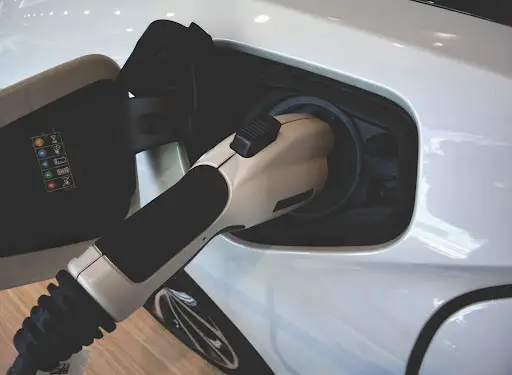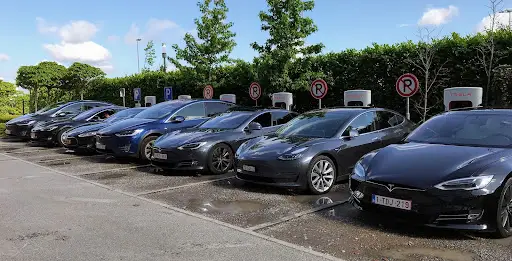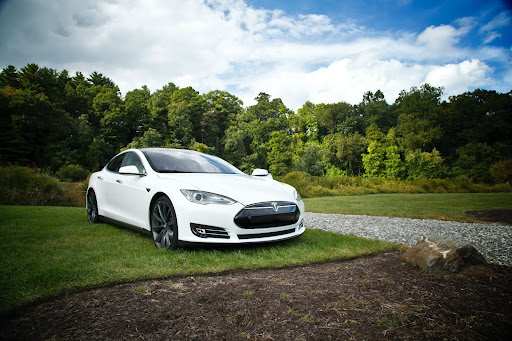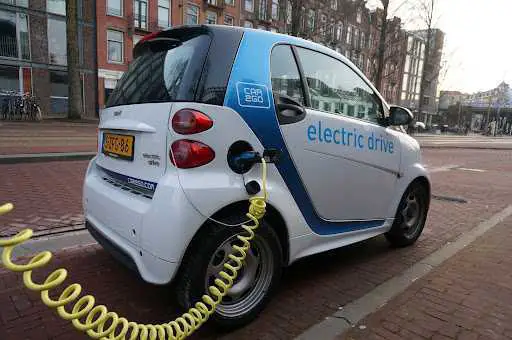Why Do Electric Cars Accelerate Faster?
Electric cars have come a long way since their introduction and have proved to be superior to conventional fuel-powered cars in many aspects. They accelerate faster, have an impressive range, and are reliable while reducing carbon emissions. While you may know about other features, you wonder why electric cars accelerate faster than internal combustion engine cars.
Electric cars accelerate faster because of their simple design. Their motors have few moving parts, and the battery can instantly send energy to the wheels without going through suspension and transmission. Plus, they have instant torque, enabling the car to reach maximum rpm from the get-go.
This post expands on why electric cars accelerate faster and compares EVs and conventional cars in terms of how they move.
Simple Design
Since electric vehicles run on batteries, they don’t need an engine like those found in internal combustion engine vehicles. The motors used to power EVS have a simpler design and fewer moving parts. This simplicity also applies to other parts of the car; there’s no transmission or gears that the driver needs to shift.
In ICE cars, the power generated by the engine has to pass through many components to reach the wheels. They include the transmission, gears, clutches, and driveshaft. Most of the energy is lost in this process, especially because of friction between these moving parts. This energy loss means lower efficiency, with the final power that reaches the wheels being much lower than what’s generated in the engine.
It’s a known fact that EVs are much more efficient than conventional cars. The energy efficiency in EVs is 59%-62%, while it’s 17% to 21% for fuel-powered cars. Electric cars rely on the flow of electrons to create the energy required for moving the wheels, while ICE cars rely on the burning of fuel to achieve this torque.
On the other hand, an electric car doesn’t have any of those components. They don’t even need gear-shifting. That’s why they can reach their highest speed without changing gears. This feature, known as instant torque, means they have maximum torque from zero RPM. The torque is the same across all speeds, and the motor can create high revs from the get-go.
That’s not the case in conventional cars. The torque has to increase gradually with the shift of gears and at higher RPMs. That’s a big hamper on the ability to accelerate quickly.
Another benefit of this simple design is that the engine and the wheels are directly connected; there’s no transmission or suspension, transferring the kinetic energy much faster.
No Skill Required for Effective Gear Shifting
Since EVs are at maximum torque all the time, you don’t need to use the clutch when you feel the torque is dropping. You don’t need to shift gears to lower or raise the speed, and above all, there’s no clutch. In an EV, once you get the car going in an EV by stomping the pedal, you’re good to go. The car takes care of the rest.
There are too many moving parts inside the motor in an ICE car to be controlled by the driver’s clutching and shifting gears. But in an electric car, the software controls everything. Although ICEs also have controlling software, they can’t have complete control over everything due to the complexity of the systems. So, even if a problem, such as a tire spinning or reduced torque, happens, the software can move things back on track more easily in EVs.

Battery Efficiency
Do you think gas is more powerful than electricity? Well, it might be, in some cases. But that’s not the case in cars. EVs get their power from their huge battery packs capable of producing up to 100 kilowatt-hours of electricity.
This number refers to the battery’s energy density, which means the amount of energy the battery can store. This energy density can produce a horsepower that’s equal to the one in many ICE cars. But since they’re more efficient in using their power, they can accelerate faster.
The bigger batteries are originally made to increase range. Still, the motor can use this energy density for another purpose: it can use up this energy in a shorter time, hence higher acceleration. The strong motors can get the higher electricity flow and efficiently use it to accelerate faster.
Another important factor about EV batteries is their location. Since they’re huge and heavy, they’re placed on the car’s floor. This placement allows for even weight distribution, reducing inertia when accelerating.
In addition, the battery’s large weight gives the car another advantage: traction. The heavier the car, the higher the traction, which is critical for acceleration. But the battery weight isn’t the only thing that leads to higher traction.
Excellent Traction
Some electric cars, especially Teslas, have all-wheel-drive powertrains. So far, there’s nothing impressive; many EVs and ICE cars are AWD. However, Teslas have two electric motors at the front and back of the car to simultaneously deliver equal power to all the wheels.�?
This way, all the wheels work to move the car forward. However, if the car senses that one wheel is getting less traction, it adjusts the torque to ensure maximum grip. This way, the car can maintain the same speed even at the turns.
What’s more, electric cars have wider tires that help them have a higher grip and traction than other cars. Of course, not all EVs have similar tire sizes. For example, Tesla cars have tires with specific tread shapes that give them the highest traction.
This feature and other design features make electric cars different in terms of acceleration, with Tesla cars having the highest acceleration. Others, such as Nissan Leaf, have acceleration values similar to conventional cars.
Although AWD isn’t a new technology and most ICE cars also have it, electric cars use it much more efficiently. AWD helps avoid spinning wheels, but in ICE cars, the process of stopping spinning takes much longer. That’s because the systems should reduce the fuel flowing into the engine, slow down the movement of the crankshaft until the wheels can slow down by receiving less momentum.

However, since EVs rely on the movement of electrons, it’s much faster at responding to spinning wheels. The instant torque also helps manage the spinning wheels in a matter of seconds.
The weight distribution in ICE cars is different from electric vehicles. While EVs have their weight spread across the floor, ICEs have their engines on the front, the part that matters the most for accelerating upon launch. That’s why they need to transfer the weight from the front to the rear using complicated suspension setups, adding more weight and complexity to the entire system.�?�?
How Do Internal Combustion Engines Work?
As the name suggests, combustion engine cars rely on the burning of fuel facilitated in the engine and the oxygen that enters the engine. The engine consists of two primary components: a moving piston and a fixed cylinder. When the fuel burns, it releases gases that push the piston up, rotating the crankshaft. It moves the gears in the powertrain to turn the wheels and move the car.
When you want to accelerate the car upon launch, the throttle opens to suck the air and send it to the engine, the fuel pump sends fuel through the valves, the mixture of the air and fuels have to burn through tiny explosions, and the power is generated. While EVs rely on the instant flow of electrons, the process of feeding and burning fuel has to be progressive. Otherwise, the pressure won’t be right.
This process of burning fuel is the primary reason behind the torque curve. It’s the highest torque available, which drops after the car reaches a certain speed. That’s the biggest difference between an EV and a conventional vehicle. EVs don’t have varying torque as the motor can provide instant torque, which remains at the maximum level all the time.
However, in an internal combustion engine, the torque depends on the speed; the higher the speed, the lower the torque. That’s because the power generated in the engine isn’t enough to increase the speed and keep the torque high simultaneously. It’s a trade-off that has to be made due to power limitations.
What EV Has the Highest Acceleration?
So, EVs’ acceleration speed is very high because of their motor design and fewer moving parts. But as mentioned, not all EVs have the same acceleration speeds, with some even being similar to ICE cars.
Tesla Model S Plaid has the highest acceleration speed, reaching from zero to 60 mph in just 2.8 seconds. It features two motors for each set of wheels, reducing wheel spinning and increasing traction upon launch. Plus, it features the Ludicrous Mode, which increases speed by feeding more electricity.
Some Tesla models, including Model S and Model X, feature Ludicrous Plus. It’s an enhanced version of Ludicrous Mode, which heats the battery to a very high temperature to maximize speed. If the car is cold due to sitting idle for a long time, the Ludicrous Plus mode can help get it going in a matter of seconds by heating the batteries.
Tesla cars also feature the Launch Mode, which activates by depressing the brake pedal while pressing the accelerator. This process also increases battery temperature, and the car will accelerate instantly after releasing the brake pedal.
Final Thoughts
Electric cars can accelerate faster than regular cars because they have a much simpler design. This way, the energy generated in the batteries can reach the wheels much faster.
In addition, the batteries have a high energy intensity, allowing them to produce more output and horsepower. And since they have instant torque, they’re in the highest rpm upon launch.�?
Amazon and the Amazon logo are trademarks of Amazon.com, Inc, or its affiliates.




